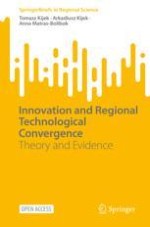This open access book explores the role of innovation in technological convergence processes in the EU regional space and shifts the focus from absolute and conditional income convergence to technological convergence and its determinants. Presenting new theoretical and empirical evidence on the determinants and trajectory of the EU region’s development and convergence, this book will appeal to scholars of economics and regional science, as well as practitioners and policymakers interested in the policy implications of regional technological convergence. The presented findings will also contribute to the development of the knowledge-based economy paradigm in the regional context.
